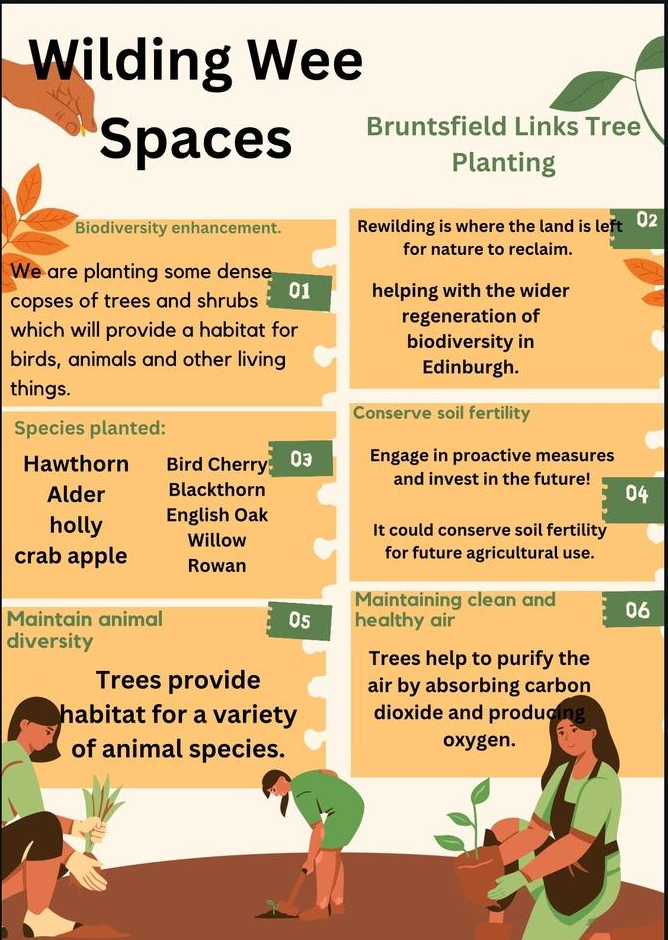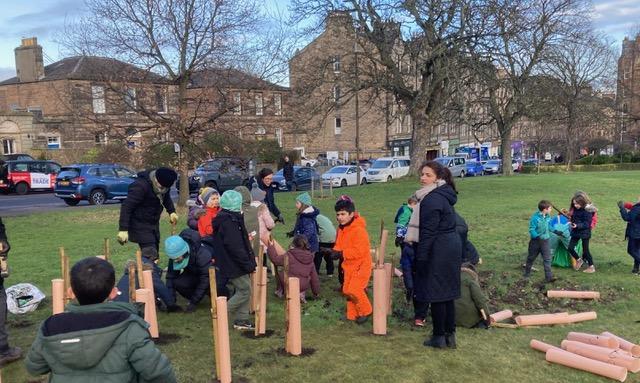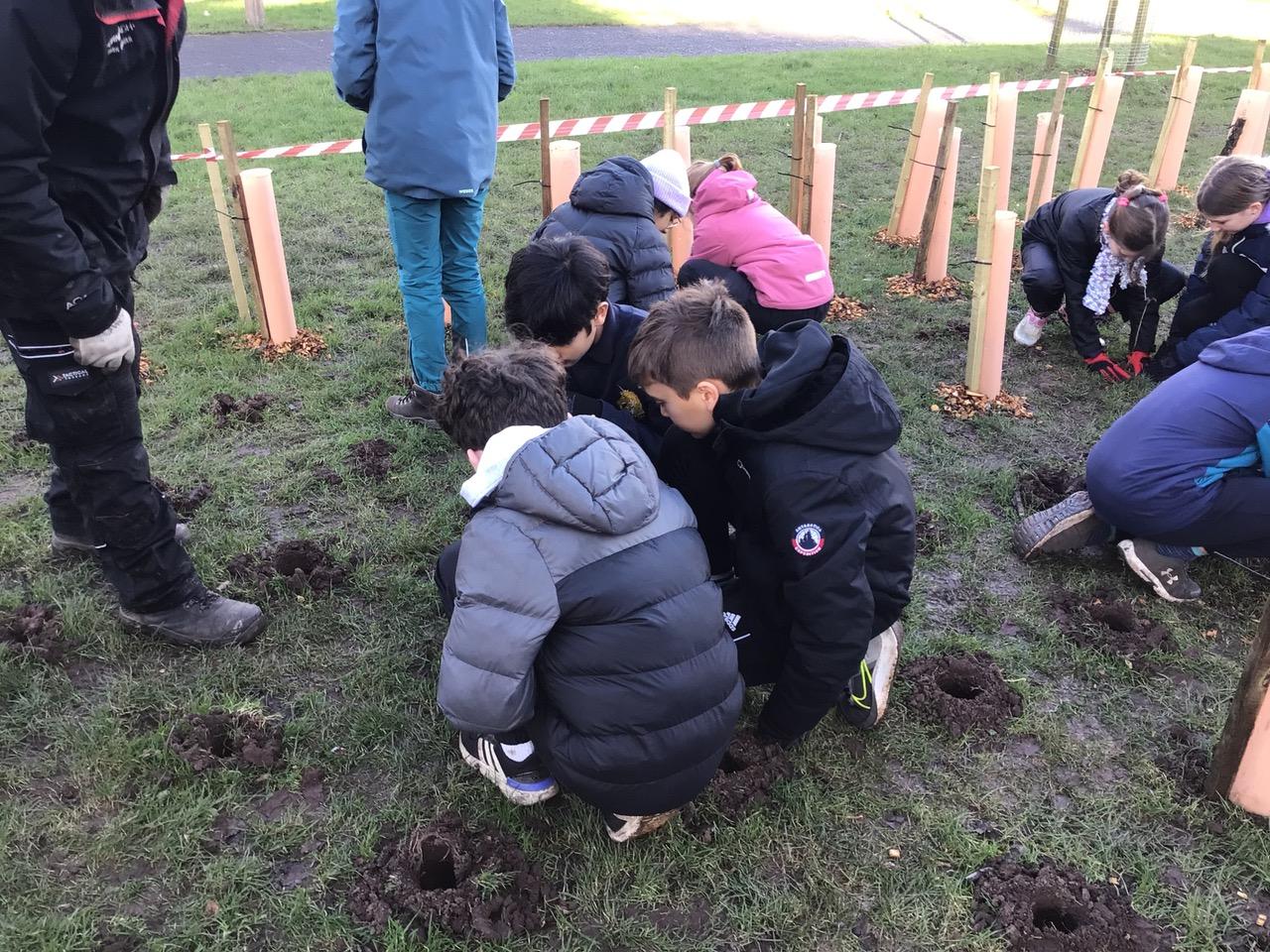Planting at Bruntsfield Links
The recent copse/hedgerow planting was agreed by CEC Parks, James Gillespie's school and Friends of the Meadows and Bruntsfield Links as part of the council's biodiversity strategy. We are planting close to achieve a dense hedge/copse where the public can't easily enter (like a normal field hedge) The result will provide a habitat for birds and insect life as well as all the microorganisms which will flourish within a biodiverse system.
Berry/fruit and nut producing trees such as rowan, alder, hazel and crab apple will grow above the bushes (holly, dog rose, elder, hawthorn, blackthorn etc) to provide birds with essential food as well as a safe place to survey the food below.
In addition such planting absorbs huge amounts of carbon dioxide which will be of particular relevance alongside the highly polluting Bruntsfield Place. It is expected dense copses will provide some shelter from prevailing west winds.
A plan will be produced to follow from this project with the aim of increasing such planting throughout the park. We will follow CEC approved policy on Biodiversity (Biodiversity Action Plan 2022-2027)in conjunction with CEC officials.






Wild cherry is a real stunner with white blossom and shiny, striped bark. Its fruits are edible and are loved by birds and small mammals.

Elder is famous for its dense clusters of white flowers which support pollinators and can be used to make cordial, wine or tea.

Blackthorn is one of our earliest flowering trees, providing a vital source of food for bees at the start of spring, and edible sloe fruits in autumn.

Crab apple is a wild ancestor of the cultivated apple and provides a springtime feast for insects with its blossom, while birds and mammals eat its fruits in autumn.

Guelder rose blossom is especially attractive to hoverflies, while its red fruits are eaten by bullfinches and mistle thrushes.

Hawthorn, known as the 'May tree' for its late spring blossom, supports hundreds of different wildlife species with its flowers, leaves and fruits.

Rowan flowers herald the start of summer and its berries are a rich source of autumn food for birds, especially blackbirds, mistle thrushes, redstarts, redwings, song thrushes, fieldfares and waxwings.